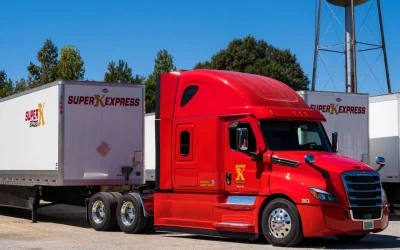Industrial platform scales are some of the most commonly used weight measurement devices found in commercial use. This is due to the fact that every manufacturer and retailer that ships parts and materials will use an industrial platform scale to determine the weight of the package because this determines the options and cost associated with shipping. Additionally, many companies weigh packages they receive to ensure they have gotten the proper quantity of goods they ordered. Industrial platform scales can also be used for filling containers. The weight of the container is tared, and the scale then carefully measures the net weight of the contents.
The Mechanical Days
The first industrial platform scales were mechanical. The platform of the scale was supported on every corner by a bearing resting on pivots. The pivots were all supported by an understructure device, which was itself supported by a lever system. The last lever typically had a 14-1 mechanical advantage. The lever system was attached to either a spring dial or a counterbalanced arm. The standard capacity of this mechanical industrial platform scale was about 1,000 pounds.
This mechanical system supplied manufacturers and retailers with weight information for decades, but it had numerous flaws. The pivots and bearings, which moved against each other, experienced wear over time and caused the scale to be inaccurate. Inaccurate scales have to be calibrated and adjusted regularly. Another flaw was in the overall design. Because the platform rested on bearings and pivots, which need a support system, the height of the scale was more than six inches, which created significant difficulty placing heavy loads on the scale platform. Perhaps the worst flaw, however, was the cost. The large number of parts needed to manufacture the scale made it very expensive.
The Electronic Era
The first digital industrial platform scales utilized a single load sensor to replace the counterbalance arm. The sensor converted the mechanical force of the weight into an electronic signal. The signal was then amplified and converted into a digital number, which was displayed. These first digital platform scales had several advantages. The weight was easier to read than the old mechanical scales. It could also interface with computers and printers. However, it still had the other flaws of the older mechanical scales.
The next step in the industrial platform scales evolution was to replace all of the pivots, bearings, and levers with a large capacity tension load cell, which accepts all of the weight directly on the platform. This eliminated much of the costs associated with the manufacturing, as well as many of the repair costs, as the tension load cells are very durable. There were still some disadvantages, however. Most significantly, the load cell had to be very large to support off-center weight on the platform. Because of this, the height of the platform remained too high for easy use.
Today, these flaws have largely been resolved. Each corner of the platform now has its own tension load cell. This allows the size of the platform to be larger and lower to the ground.


